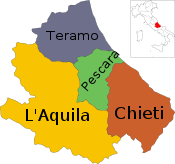The University of Trieste is a public research university in Trieste in the Friuli-Venezia Giulia region in northeast Italy. The university consists of 10 departments, has a wide and almost complete range of university courses and has about 15,000 students and 1,000 professors. It was founded in 1924.

The Belarusian State University of Informatics and Radioelectronics, also known as BSUIR, is a public Higher Education Institution accredited by the Ministry of Education of the Republic of Belarus. Nowadays it is a large educational and scientific complex in Minsk, Belarus. BSUIR was founded on March 15, 1964, and plays a leading role in preparing its students in the fields of computer science, radioelectronics and telecommunications in Belarus.

The International School for Advanced Studies is an international, state-supported, post-graduate-education and research institute in Trieste, Italy.

The COMSATS University Islamabad (CUI), formerly known as COMSATS Institute of Information Technology (CIIT), is a public university in Pakistan. It is a multi-campus university with its principal seat located in Islamabad. Comsats was envisioned as Pakistan's first exclusive Institute of Information Technology. In the latest QS University Rankings, CUI ranked 7th in Pakistan and 801-1000 in the world. Nationally it is ranked top-most in Computer Sciences and IT category. COMSATS University Islamabad (CUI) is under the administration of the Commission on Science and Technology for Sustainable Development in the South.

The University of Craiova is a public university located in Craiova, Romania. It was founded in 1947, initially with four institutes, in the Palace of Justice of Craiova. It is the largest university in the historical Oltenia province of Romania. It was the last university established in the Kingdom of Romania. It was the fifth university in Romania officially approved by the Ministerial Council of the Socialist Republic of Romania in 1965, with seven faculties: Mathematics, Philology, Electrotechnics, Agriculture, Horticulture, Chemistry and Economics. The university is a member of the European University Association. It currently includes a total of 16 faculties and two colleges for undergraduate and postgraduate programmes.

Laboratori Nazionali del Gran Sasso (LNGS) is the largest underground research center in the world. Situated below Gran Sasso mountain in Italy, it is well known for particle physics research by the INFN. In addition to a surface portion of the laboratory, there are extensive underground facilities beneath the mountain. The nearest towns are L'Aquila and Teramo. The facility is located about 120 km from Rome.

The Istituto Nazionale di Fisica Nucleare is the coordinating institution for nuclear, particle, theoretical and astroparticle physics in Italy.

Indian Institute of Science Education and Research, Bhopal is a prestigious autonomous research institute in Bhauri, Bhopal district, Madhya Pradesh, India. It was established by the Ministry of Education (India), Government of India in 2008 in order to incorporate research in fundamental science at undergraduate and graduate level, with equal emphasis on higher education for research and education in science. It is an autonomous institution awarding its own degrees.

İstanbul Kültür University (İKÜ) is one of the many private universities located in Istanbul, Turkey. It has a total of four campuses all in close proximity to each other in the western part of Istanbul. The three campuses are located in Şirinevler, İncirli, Basın Ekspres and Ataköy This non-profit University was founded in 1997; its Industrial Engineering started in the 1997–98 academic year. The university has five schools and two vocational schools. In 2009, Global Political Trends Center, a policy oriented research institution, was founded under the auspices of the university.
The DarkSide collaboration is an international affiliation of universities and labs seeking to directly detect dark matter in the form of weakly interacting massive particles (WIMPs). The collaboration is planning, building and operating a series of liquid argon time projection chambers (TPCs) that are employed at the Gran Sasso National Laboratory in Assergi, Italy. The detectors are filled with liquid argon from underground sources in order to exclude the radioactive isotope 39
Ar, which makes up one in every 1015 (quadrillion) atoms in atmospheric argon. The Darkside-10 (DS-10) prototype was tested in 2012, and the Darkside-50 (DS-50) experiment has been operating since 2013. Darkside-20k (DS-20k) with 20 tonnes of liquid argon is being planned as of 2019.

Antonio Ereditato is an Italian physicist, currently Research Professor at the University of Chicago, associate researcher at Fermilab, Batavia, USA, and Emeritus professor at the University of Bern, Switzerland, where he has been Director of the Laboratory for High Energy Physics from 2006 to 2020. From 2021 to 2022 Ereditato has been Visiting Professor at the Yale University, USA. He carried out research activities in the field of experimental neutrino physics, of weak interactions and strong interactions with experiments conducted at CERN, in Japan, at Fermilab in United States and at the LNGS in Italy. Ereditato has accomplished several R&D studies on particle detectors: wire chambers, calorimeters, time projection chambers, nuclear emulsions, detectors for medical applications.
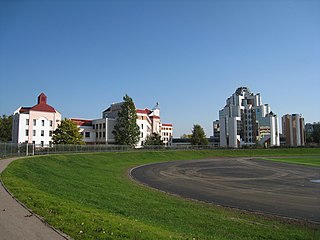
Alferov Federal State Budgetary Institution of Higher Education and Science Saint Petersburg National Research Academic University of the Russian Academy of Sciences was founded in 1997 originally as the Research and Education Center of the Ioffe Institute to integrate science and education in the field of physics and information technologies. It has the distinction of being the only university in the Russian Academy of Sciences (RAS), which is composed primarily of national research institutes. Accordingly, the word "Academic" in the university's name stems from the Academy of Sciences, the organization that unites numerous national research institutes in Russia. The St. Petersburg Academic University was founded by Zhores Alferov, director of the Ioffe Institute, vice-president of the RAS Academician and Nobel prize laureate, who served as its rector until his death on March 1, 2019.

Paolo Giubellino is an experimental particle physicist working on High-Energy Nuclear Collisions. Currently he is the joint Scientific Managing Director of the Facility for Antiproton and Ion Research (FAIR) and the GSI Helmholtz Centre for Heavy Ion Research (GSI) and Professor at the Institute of Nuclear Physics of the Technische Universität Darmstadt.
The Italian Society on General Relativity and Gravitation (SIGRAV), founded in 1990 , is a non-profit association whose purpose is that of bringing together members belonging to the Italian scientific community who are interested in the various aspects of general relativity and in gravitation physics.
The Dark Matter Particle Explorer, or DAMPE, also known as Wukong, is a Chinese Academy of Sciences (CAS) satellite which launched on 17 December 2015. The satellite was launched on a Long March 2D rocket from Launch Pad 603 at the LC-43 complex, also known as the South Launch Site, at the Jiuquan Satellite Launch Center. It is China's first space observatory.

Assergi is a frazione of the comune of L'Aquila, located about 11 km (6.8 mi) from the capital. With a population of just over 500, it is situated at an altitude of approximately 1,000 meters, below the western slope of the Gran Sasso in a small plain called the Piana di Assergi (Plain of Assergi). Assergi was formerly included in the comune of Camarda, which is directly to its south.
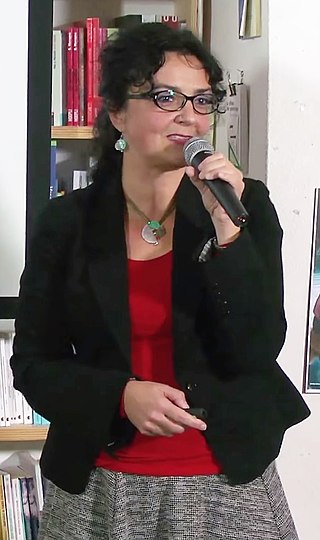
Cătălina Oana Curceanu is a Romanian physicist and lead researcher at the Istituto Nazionale di Fisica Nucleare. She researches low energy quantum chromodynamics.

The Princeton University Department of Mathematics is an academic department at Princeton University. Founded in 1760, the department has trained some of the world's most renowned and internationally recognized scholars of mathematics. Notable individuals affiliated with the department include John Nash, former faculty member and winner of the 1994 Nobel Memorial Prize in Economic Sciences; Alan Turing, who received his doctorate from the department; and Albert Einstein who frequently gave lectures at Princeton and had an office in the building. Fields Medalists associated with the department include Manjul Bhargava, Charles Fefferman, Gerd Faltings, Michael Freedman, Elon Lindenstrauss, Andrei Okounkov, Terence Tao, William Thurston, Akshay Venkatesh, and Edward Witten. Many other Princeton mathematicians are noteworthy, including Ralph Fox, Donald C. Spencer, John R. Stallings, Norman Steenrod, John Tate, John Tukey, Arthur Wightman, and Andrew Wiles.
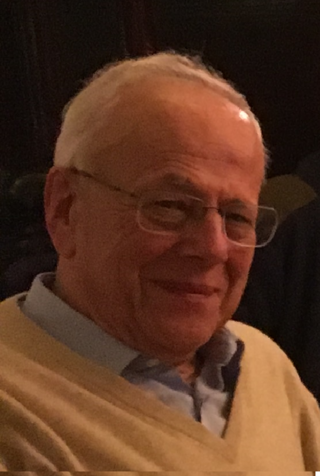
Giorgio Benedek is an Italian physicist, academic and researcher. He is an Emeritus Professor of Physics of Matter at University of Milano-Bicocca and Director of the International School of Solid State Physics at Ettore Majorana Foundation and Centre for Scientific Culture.
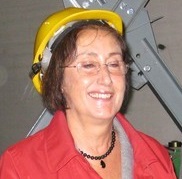
Lucia Votano is an Italian astroparticle physicist, and the first woman to direct the Gran Sasso National Laboratory, from 2009 to 2012. Her research focuses on neutrinos, and she was the coordinator of the OPERA experiment, that led to the first detection of tau neutrinos from muon neutrino oscillation.
















